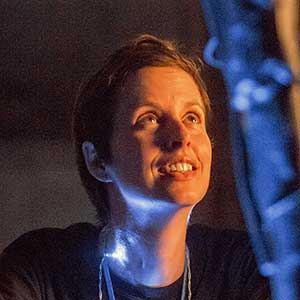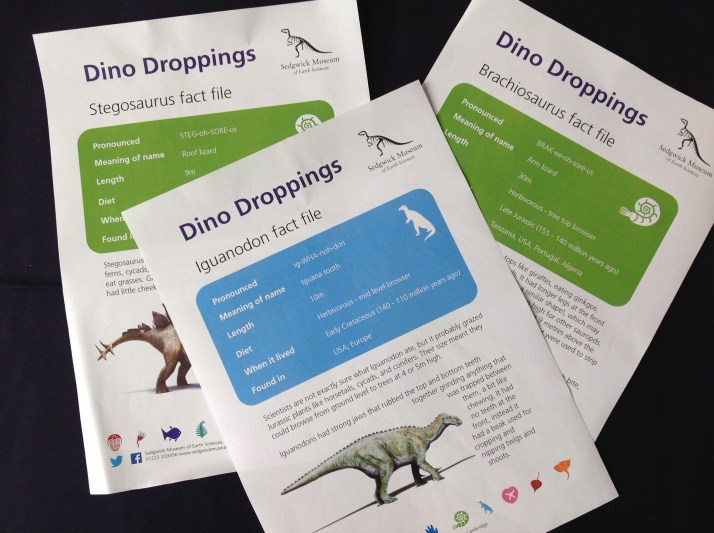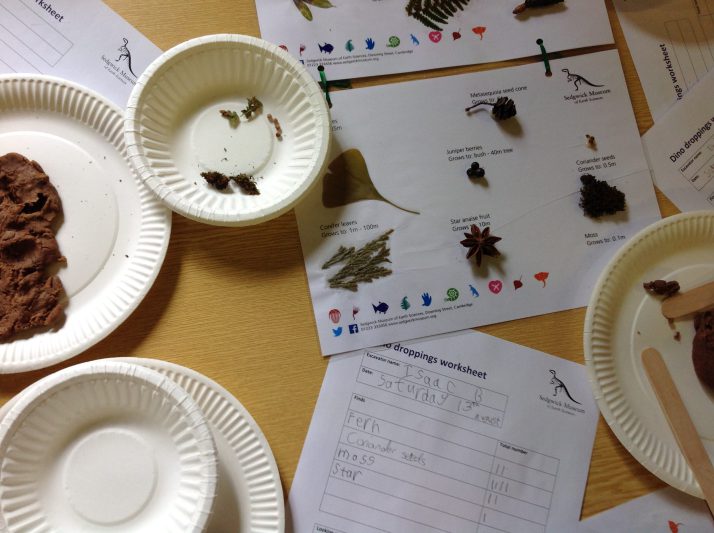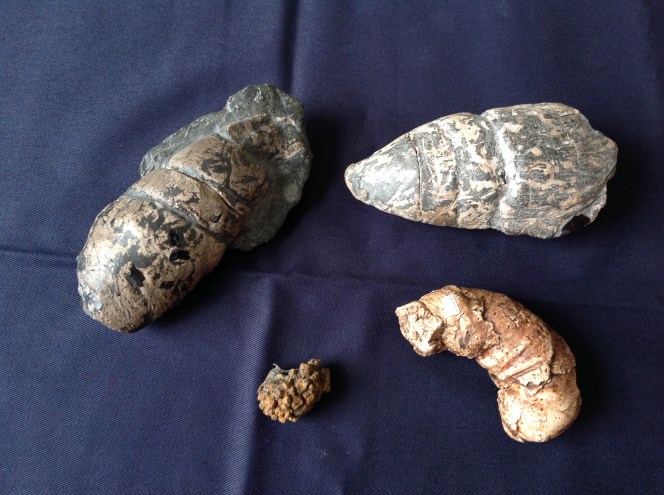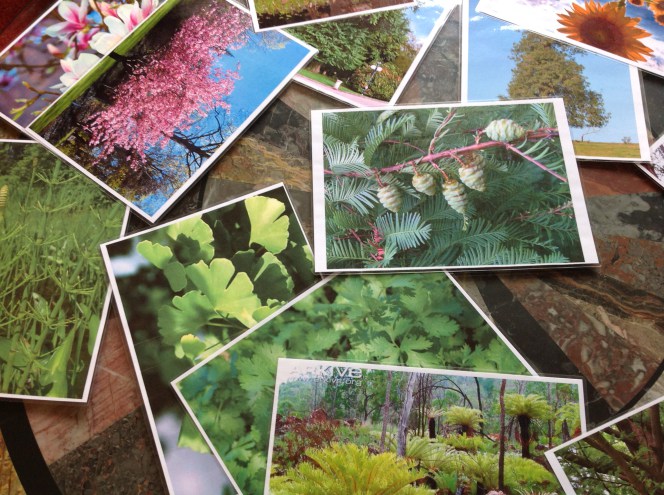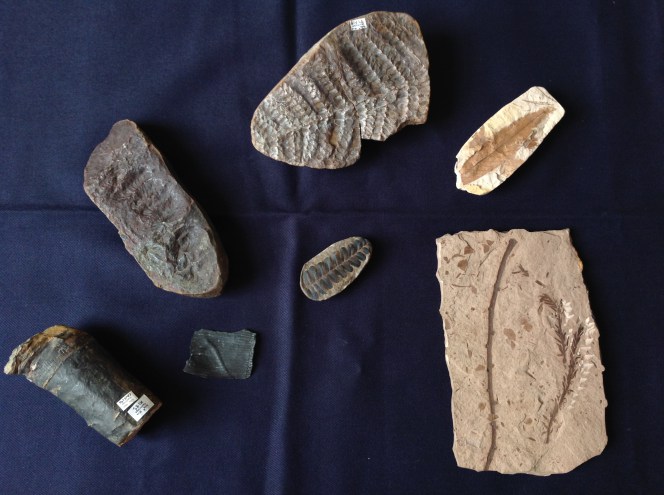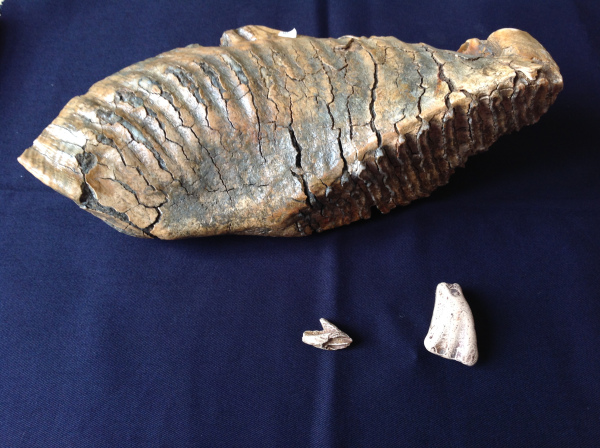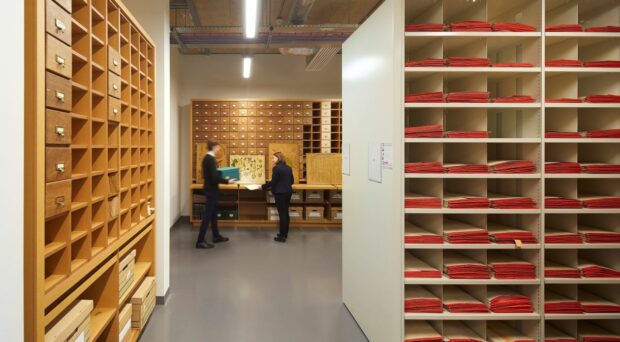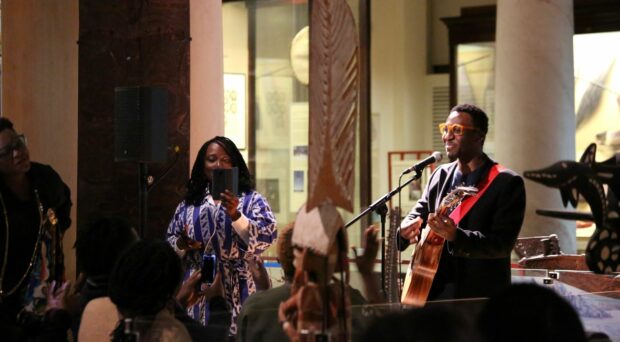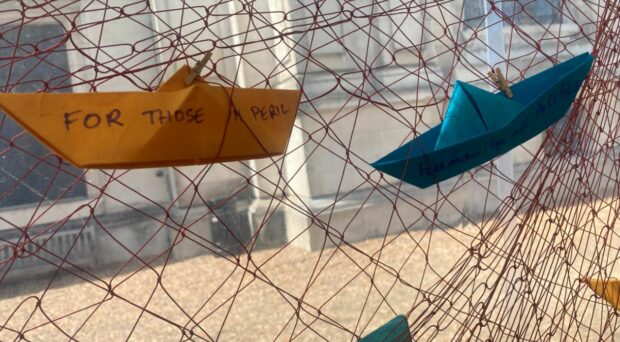For most people, the idea of finding old poo is disgusting, and the idea of dissecting it and sorting through it is even worse! Unless of course you’re a child of a certain age and the poo in question is dinosaur poo.
A chance conversation with a colleague, when I should have been paying attention in a meeting, turned into a story about ‘archaeological’ excavations on salt dough poo. It was only a short jump from Roman poo to Dino poo and by the end of the meeting the Dino Droppings workshop was already taking shape.
We run lots of craft events for families in the Sedgwick Museum but this seemed like a great way to bring a little science into the fun. Armed with a salt dough recipe for poo and ideas about identifying a dinosaur by what it ate I set to work.
The first idea was herbivore vs carnivore. Helen, our events co-ordinator, and I spent a while combing the early years catalogues for fake bones small enough to include and cutting fish scales out of shiny paper but in the end we decided it would be safer all round to stick with herbivore diets. The poo would be fake but at least the contents could be real.
 We settled for browsing height to distinguish our poo and chose three iconic dinosaurs; Brachiosaurus as a tree top browser, Iguanodon for mid-level and Stegosaurus for ground level. Choosing which plants to use was the next challenge. We wanted to be as realistic as we could, so no grass; that didn’t evolve and spread until long after the dinosaurs. Ferns, moss, conifer, ginkgo and magnolia were easy to find and haven’t changed much since dinosaur times, but our conservator Sarah noticed a Metasequoia glyptostroboides tree and picked up some cones. Metasequoia, or Dawn Redwood, was around with the dinosaurs but was thought to be extinct until it was rediscovered in China in 1946. Unfortunately I didn’t find any horsetail, another dinosaur favourite, until after we’d made the poo.
We settled for browsing height to distinguish our poo and chose three iconic dinosaurs; Brachiosaurus as a tree top browser, Iguanodon for mid-level and Stegosaurus for ground level. Choosing which plants to use was the next challenge. We wanted to be as realistic as we could, so no grass; that didn’t evolve and spread until long after the dinosaurs. Ferns, moss, conifer, ginkgo and magnolia were easy to find and haven’t changed much since dinosaur times, but our conservator Sarah noticed a Metasequoia glyptostroboides tree and picked up some cones. Metasequoia, or Dawn Redwood, was around with the dinosaurs but was thought to be extinct until it was rediscovered in China in 1946. Unfortunately I didn’t find any horsetail, another dinosaur favourite, until after we’d made the poo.
So what were we aiming to do in the workshop? The idea was to excavate a poo, discover what was in it and use that information to figure out if the dinosaur was feeding from high up or low down. Gathering and recording data, making observations and improving fine motor skills are all developed at the same time as seeing parents grossed out by poo (you can make them look very realistic) and generally having fun. All of this is based in science as the study of coprolites (fossilised poo) really is used to help understand dinosaur (and human) diets.
Each table had ID sheets (we had fun laminating leaves) to help identify their finds, a worksheet to write on and bowls to put the finds in. Once they had identified where their dinosaur had been browsing i.e. high – low they were given a Dino Fact Sheet to take home.
During the excavations volunteers and staff chatted with families about the plants they were finding; did the plant live in hot or cold climates, did their dinosaur have a long neck, and was it a herbivore or carnivore?
The Sedgwick Museum is full of amazing fossils and as it turns out 39 coprolites, but you can’t get your hands on them, so one thing I was keen to do in the workshop was give families the chance to handle some real fossils. As well as a selection of coprolites we had some plant fossils that could be compared with their living relatives, which was a great way to see the difference between today’s horsetails that grow to 1.5m and their fossil relatives that grew to 30m.
Once you start thinking about what comes out of a dinosaur you have to think about what goes on at the other end. Did you know that dinosaurs didn’t chew? Plant eaters today have big grinding teeth, and spend a lot of time chewing. The biggest dinosaurs to ever live were plant eaters, but they had relatively few, small teeth. Instead of chewing they ate plants whole and just like some birds today, they ate stones, known as gastroliths, to help them grind up their food. This fun fact gave us the opportunity to get out fossil teeth for comparison, like mammoth teeth vs tiny triceratops teeth.
The workshops ran for an hour each and were advertised at 5 years and up. It worked well for the 5 – 8 year olds but could easily be beefed up for older kids with more questions about diet and environment.
We’ve had some great feedback about the workshop but there are few things I’d change. It’s hard to imagine how big 1m is let along 35m or more so next time I’ll make a sheet with pictures to compare the plant heights. I’ll also get more help to make the poo – it takes a lot longer to make it than it does to dissect it!

